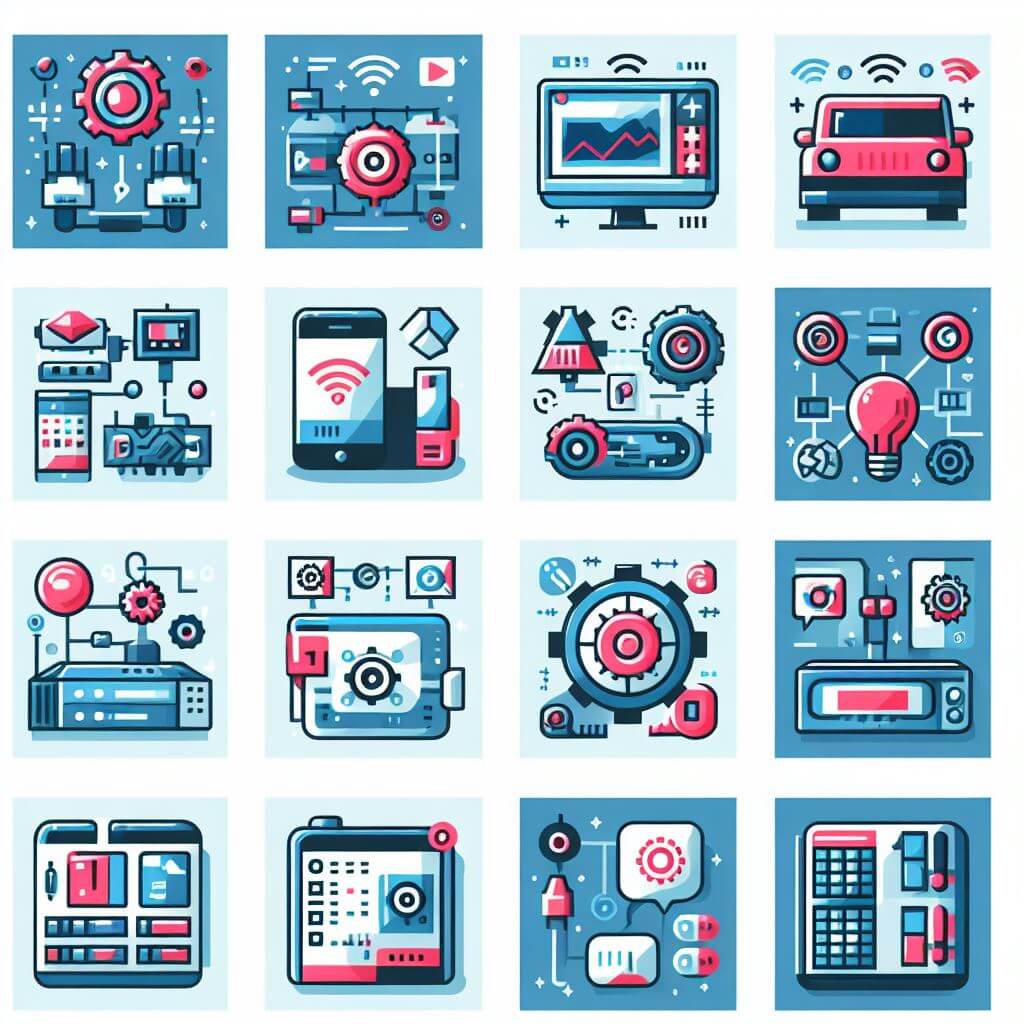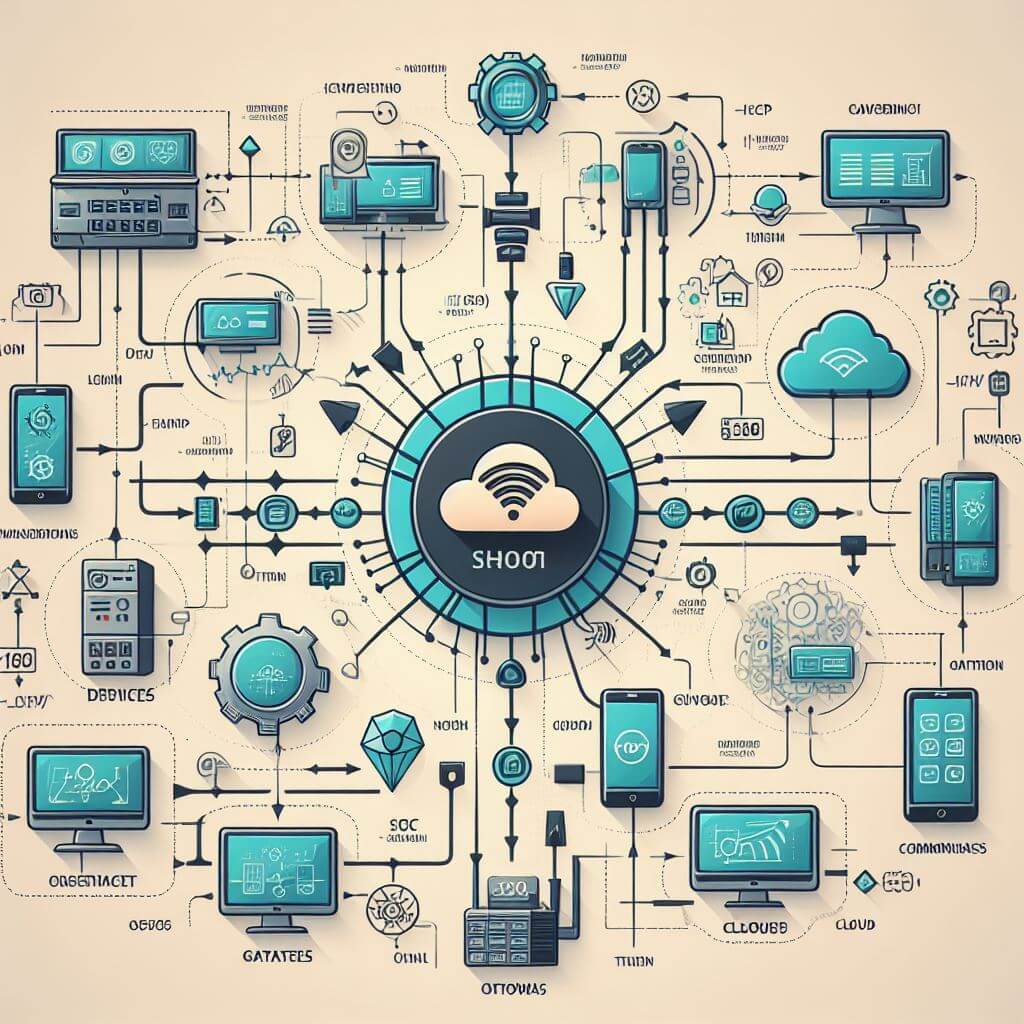In examining the structural organization of Machine-to-Machine (M2M) communication protocols, it’s imperative to appreciate that these protocols are not monolithic but rather are segmented into hierarchical layers, each designed to fulfill distinct functions within the communication process. Comparable to the layered model of the Internet itself, the hierarchies in M2M protocols segregate tasks into manageable sections, enabling improved efficiency, better error handling, and greater flexibility.
At the lowest level of this hierarchy lies the physical layer protocols. These are primarily concerned with the actual hardware and the foundational means by which data is physically transmitted and received. This could include aspects of radio frequency communication, Ethernet connectivity, or any other medium that serves as the conduit for data transfer.
Ascending from the physical, we encounter the data link layer protocols. These are tasked with the management of point-to-point frame synchronization, the physical addressing, and the error detection and correction necessary to deliver a reliable data transmission service.
 Next comes the network layer protocols, which facilitate the routing of packets of data from source to destination across complex networks. This layer is particularly essential for ensuring the data does find the most efficient path to its endpoint, which may involve traversing multiple networks or hops. Its role is to abstract the underlying infrastructure to provide a seamless transmission process for the upper layers.
Next comes the network layer protocols, which facilitate the routing of packets of data from source to destination across complex networks. This layer is particularly essential for ensuring the data does find the most efficient path to its endpoint, which may involve traversing multiple networks or hops. Its role is to abstract the underlying infrastructure to provide a seamless transmission process for the upper layers.
The transport layer protocols follow, providing critical end-to-end communication services for data flow control, segmentation, error recovery, and the establishment of reliable or unreliable communication channels. In an M2M context, this layer adjusts to the constraints and needs of the devices, ensuring that even with limited computing resources, devices can still participate in reliable communication.
At the pinnacle of the hierarchy rest the application layer protocols. These provide the high-level APIs and service models that the applications use to communicate over a network. It is at this juncture that device-specific functionalities and the logic for applications to process and utilize data are determined. Protocols at this layer are designed to handle the vast varieties and volumes of data generated by M2M environments and turn that data into actionable insights.
Breaking Down the Protocols
When delving deeper into the comparison of various M2M communication protocols, it becomes apparent that each has been developed with a certain operational context in mind, reflecting a diverse set of design principles, capabilities, and suitability for particular applications.
Starting with Message Queuing Telemetry Transport (MQTT), this protocol operates on a publish-subscribe model that is incredibly effective in scenarios where message size and bandwidth need to be conserved. IoT devices with limited processing power and those operating on constrained networks benefit from MQTT’s simplicity and the elegantly efficient way it handles intermittent connections. Originally developed for oil pipelines, MQTT has evolved into a widespread protocol for all sorts of M2M communication needs. Despite its streamlined nature, MQTT can present limitations. While it handles small and simple messages well, it is not as adept at transferring larger data payloads or supporting complex network patterns without additional customization.
The Constrained Application Protocol (CoAP) is designed to work in very constrained environments, and thus, is lightweight and optimized to be simple enough for basic computational nodes. This makes CoAP particularly suited for M2M applications where devices, such as sensors and actuators in home automation systems, operate with limited power resources. CoAP is structured similarly to HTTP, providing familiar methods like GET, POST, PUT, and DELETE, which facilitates ease of adoption and integration with web-based services. CoAP’s lightweight design means it could be less favorable in scenarios that demand extensive and multifaceted messaging functionalities, or in fully connected environments where the constraints it addresses are not present.
The Advanced Message Queuing Protocol (AMQP) stands out for its robust and comprehensive feature set suitable for high-enterprise applications that require reliable and secure message-oriented middleware. AMQP’s complex routing and flexible queueing model make it an exceptional fit for creating sophisticated and scalable M2M ecosystems. It guarantees message delivery and transactional integrity, which are vital for business-critical operations. The comprehensive nature of AMQP also contributes to its relatively greater demand on resources compared to simpler protocols. This complexity can prove to be a hindrance when considering deployment on smaller devices or systems with stringent resource limitations.
Lightweight Machine-to-Machine (LwM2M) is a protocol designed to cater to the needs of device management and telemetry within the IoT landscape. Focused on addressing the application layer necessities, LwM2M offers a suite of services including remote configuration, monitoring, and management of devices over the air. It excels particularly in networks with cellular connectivity, playing a crucial role in enabling efficient communication in mobile M2M applications. The protocol adopts a model that includes the description of the interface between LwM2M Servers and LwM2M Clients, which not only aids in standardizing communication but also provides an architecture that supports lightweight and low-power operations. LwM2M reflects a newer generation of M2M protocols and, as such, may experience growing pains as it matures and establishes itself more fully in the IoT ecosystem, which can make entities cautious about its adoption in the short term.
Operational Considerations for Protocol Selection
When it comes to selecting the right M2M communication protocol, decision-makers must pay close attention to the operational requirements of their systems. This meticulous selection process is driven by the understanding that the optimal protocol should not only meet current needs but should also adapt to future demands and technological changes.
One of the foremost factors to consider is power availability, which significantly affects the choice of protocol, especially in battery-operated or energy-harvesting devices. Protocols like MQTT and CoAP are designed with energy efficiency in mind, thus supporting deployments where power conservation is essential. For these devices, lightweight protocols that minimize data overhead can make the difference between frequent battery replacements and years of uninterrupted service.
 Another vital consideration is the data throughput requirement of the deployment scenario. Systems that need to handle large volumes of data or require high-speed transmission will benefit from protocols that can efficiently manage larger payloads and provide higher bandwidth. Systems that deal primarily with small, sporadic data packets might prioritize protocols that are better optimized to handle such communication patterns.
Another vital consideration is the data throughput requirement of the deployment scenario. Systems that need to handle large volumes of data or require high-speed transmission will benefit from protocols that can efficiently manage larger payloads and provide higher bandwidth. Systems that deal primarily with small, sporadic data packets might prioritize protocols that are better optimized to handle such communication patterns.
The range of the M2M communication network is also a key factor. Some protocols are better suited for short-range communication, such as those used in home automation, while others are designed for long-range applications, such as pipeline monitoring across vast distances.
Real-time data transmission is an essential requirement for certain M2M applications, particularly ones that rely on timely and synchronized data exchange. Protocols that offer low latency are vital in domains such as health monitoring systems, where the timely delivery of data can have critical implications.
Security stands as a non-negotiable aspect of any M2M communication protocol. With the increasing sophistication of cyber attacks, it’s crucial that selected protocols provide robust security measures. MQTT’s use of SSL/TLS provides secure channels, while CoAP’s use of DTLS is an asset in guarding against interceptions. AMQP’s support for SASL authentication and TLS encryption positions it as a highly secure protocol for enterprise environments. Similarly, LwM2M employs DTLS for secure device management. Each protocol’s security features must be carefully analyzed not just for current threats but also for perceived future vulnerabilities.
Cost is another compelling dimension of protocol selection; it encompasses the expenses related to initial setup and long-term operational and maintenance costs. Protocols that are lightweight and designed for minimal maintenance, such as MQTT and CoAP, often lead to lower costs over time. Implementing a more complex protocol like AMQP may involve greater initial investment but can prove to be cost-efficient for enterprises needing a large-scale, reliable messaging system with fewer maintenance requirements.
Scalability is particularly critical given the rapid growth and integration of IoT devices. Protocols must be able to sustain performance even as the system expands. MQTT and CoAP are inherently designed to handle scaling in the IoT sphere, whereas AMQP’s capabilities make it adept at scaling within large-scale enterprise systems. LwM2M, tailored to manage a plethora of IoT devices, supports scalability by allowing efficient command and control message exchanges even as device networks grow.
